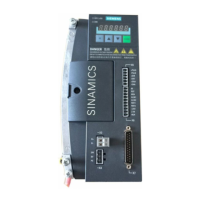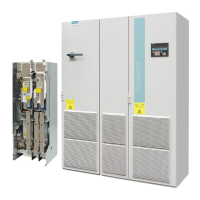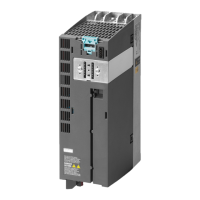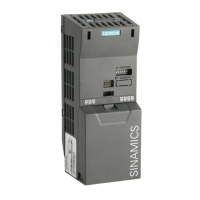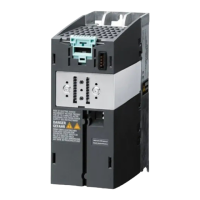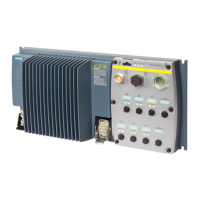Cabinet design and EMC
13.5 Cable shielding and routing
SINAMICS S120 Combi
240 Manual, Edition 07/2012, 6SL3097-4AV00-0BP3
Power and signal cables must always be routed separately. For this purpose, it is practical to
arrange the various cables according to cable groups. Cables belonging to a group can be
combined in a bundle. The various cable groups must be routed with the necessary
clearance between them. A minimum clearance of 20 cm has proven itself in practice. As an
alternative, shielding plates with the appropriate contacts at several locations can be used
between the cable bundles.
All cables inside the cabinet should be laid as closely as possible to parts connected with
cabinet ground, such as a mounting plate or cabinet wall. Ducts made of sheet steel or
cables routed between steel sheets (e.g. between the mounting plate and back wall) should
provide adequate shielding.
All cables must be kept as short as possible, to minimize the antenna effect.
Signal and power cables may cross each other (if absolutely necessary), but must never be
routed closely to one and other in parallel over longer distances.
Signal cables must be routed with a minimum clearance of 20 cm from strong magnetic
fields (motors, transformers). Alternatively, shield plates with the appropriate contacts at
several locations along their length can be used to provide be appropriate clearance.
Note: Cables for the 24 V supply should be treated just like signal cables.
Avoid, where possible, routing non-shielded cables in the immediate vicinity of noise
sources, e.g. transformers. Signal cables (shielded and unshielded) must be routed far away
from strong external magnetic fields (e.g. transformers, line reactors). In both cases, a
distance of ≥ 300 mm is usually sufficient.
DANGER
A suitable PE conductor must be connected to all devices in protection class I. The PE
conductor connection of the individual components must have at least 4 mm².
Shield support
The cable shields must be connected as close to the conductor terminal connections as
possible to ensure a low-impedance connection with cabinet ground. For power cables from
Siemens in which the shield is connected to the connector shell (see relevant catalog), this is
a sufficiently good shield support.
For components that do not have any special shield connection or where the shield
connection is not sufficient, the cable shields can be connected to the metal mounting plate
using hose clamps and toothed rails. The cable length between the shield contact point and
the terminals for cable cores must be kept as short as possible.
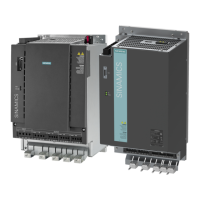
